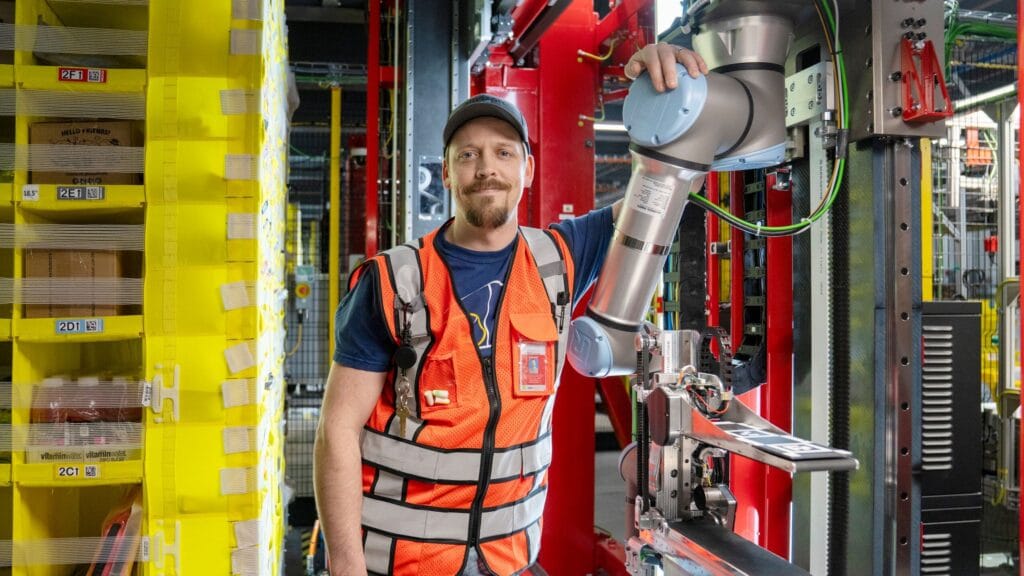Amazon’s new robotic initiative, developed with physical intelligence and force sensors, is designed to enhance human work ergonomics and optimize order management.
Amazon has officially introduced Vulcan, the first robot in its fleet capable of “feeling” through the use of force feedback sensors and physical intelligence algorithms. This advancement marks a qualitative leap within its automation ecosystem and is being deployed in logistics centers across the U.S. and Europe with the aim of improving both operational efficiency and employee safety.
Unlike previous systems such as Sparrow, Cardinal, or Robin, Vulcan stands out for a key ability: touch. Equipped with an end-effector that acts as a combination of a ruler and a hair straightener, the system can manipulate objects in tight, cluttered spaces with unprecedented precision. Thanks to its sensors, Vulcan knows how much pressure it applies and adjusts its movements to avoid damaging the contents.
“It’s not just about seeing the world; it’s about feeling it. Vulcan represents a fundamental advancement in robotics,” stated Aaron Parness, Director of Applied Science at Amazon.
Ergonomic Improvement and Human-Machine Collaboration
The robot is specifically designed to operate in challenging areas of the warehouse, such as upper compartments (2.5 meters high) or lower storage levels, which previously required the use of ladders by staff. By reducing this need, Vulcan allows employees to focus on tasks at waist level, improving posture, decreasing fatigue, and speeding up processes.
“Working alongside Vulcan has greatly facilitated our picking and storage tasks,” commented Kari Freitas Hardy, an operator at the Spokane (Washington) logistics center. “Additionally, many colleagues have taken the opportunity to train in more advanced technical roles.”
Precision and Intelligent Autonomy
In practice, Vulcan can manipulate 75% of the products stored in Amazon’s logistics centers. To identify the correct item, it uses computer vision and selective suction, minimizing the risk of retrieving unwanted items. If the robot detects a situation beyond its reach, it calls for operator intervention, thus reinforcing effective collaboration between AI and humans.
Moreover, its physical intelligence allows it to learn from experience, adjusting its behavior based on the different objects it handles. Like a child learning through touch, Vulcan improves with each attempt.
Next Steps
Since 2012, Amazon has deployed over 750,000 robots in its centers, with Vulcan being one of the most sophisticated to date. Its implementation is expected to gradually expand across the U.S. and Europe over the next two years as part of the “Delivering the Future” strategy.
“Our vision is to scale Vulcan across our network to enhance efficiency, reduce physical risks, and support our employees,” concluded Parness. “And it all started with teaching a robot to feel.”
Source: Amazon

